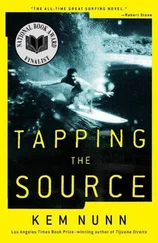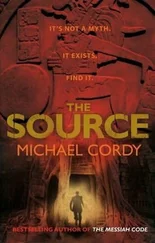“You’re sure?” Tabari asked.
“I tested it in different directions. Nothing. But I left it for you.”
“A cave? A well?”
“I don’t even have an opinion,” Eliav said.
At lunchtime the girl who had crawled in to do the sketching took one of Cullinane’s cards and drew the probable disposition of the skeleton embedded in the breccia. There was hushed excitement as the card circulated, and Tabari asked, “Where’d you dredge up the date 70,000 B.C.E.?”
“Educated guess,” the artist explained. “The flints in the breccia seem to correlate with ones shown for such dating in Garrod and Stekelis.”
When the matter had been well discussed Eliav ventured the opinion that carbon dating would probably place the skeleton at no earlier than 30,000 B.C.E. and Tabari supported him. “Our bones aren’t going to be as old as those found in the Mount Carmel caves by Dorothy Garrod,” he predicted.
“You think the breccia indicates a cave?” the photographer asked.
“We’ll know better after lunch,” Eliav assured the group.
“What’s the mystery about the pick?” the photographer asked.
Tabari pushed back his food and leaned forward on the table, whereupon talking ceased and the kibbutzniks drew closer, for it was their tell, too. “When I found the bones,” he said, “I did a little more digging and thought I heard an empty echo. When Dr. Eliav went down to check the bones he did some digging on his own. His last blow…” Tabari swung an imaginary pick. “On the other side…emptiness.”
“Another cave?”
“Let’s consider that for a moment,” the Arab said. “If it had originally been a cave, say, fifty thousand years ago, and the entrance was filled in, wouldn’t it now be filled in, too? How could there possibly be any empty space left?”
“He’s probably right,” Eliav confirmed, and the kibbutzniks dissected the theory for some time, concluding in the end that it could not have been a cave.
“Not an original cave,” one of the kibbutzniks agreed, “but why not a dug cave, like the ones Kathleen Kenyon found outside the walls at Jericho?”
“Let’s consider that too,” Tabari said. “In your opinion, what would be the oldest date we might logically assume for such a dug cave…one that wasn’t now filled in with breccia?”
“Kenyon’s graves were 2000 B.C.E.,” the kibbutznik volunteered. “And they were certainly not filled in. So ours could be…what? Maybe 3000 B.C.E. at the most.”
Eliav listened with pleasure. In Israel everyone was an archaeologist, and the kibbutznik had his dates right, but Tabari pointed out, “You’re a little early. Remember that Jericho is very dry and we’re very wet. In wet areas caves fill in much faster.”
“Then what is the empty space?” the kibbutznik demanded.
Tabari thought for some time, then said cautiously, “Since some of you want to work here for the next eight or ten years, let’s try some pure deduction. I’ll tell you categorically that I’ve ruled out caves. Now what else might it be?” There was silence. “What major component of a tell are we lacking here at Makor?”
“Water supply,” a kibbutznik suggested.
“Correct.” He still pronounced it koe-rect. “And what does that suggest?”
“The source was either at the base of the tell, which at Makor seems unlikely because of the bedrock. Or it was outside, as at Megiddo and Gezer.”
“Correct. And where does that lead us?”
“Judging by what happened at those two places, sometime around 1100 B.C.E. they dug a vertical shaft through the tell, then a horizontal tunnel to the well.”
“Correct. And which have we hit?”
“If it were the vertical shaft,” a girl volunteered, “it would surely have been filled solid in three thousand years. Therefore it’s got to be the horizontal.”
“Correct, but what if I tell you that the horizontal would also be packed solid in that time?”
This stumped the kibbutzniks and there was silence. The English photographer asked, “Is your assumption accurate? Would it be packed solid?”
“Correct.”
General Teddy Reich’s daughter asked in a very small voice, “But we know there was a Crusader castle on the tell. They had to have water to withstand sieges. Couldn’t they have redug the tunnel? About a thousand years ago?”
“I wish I could say ‘correct,’ because that’s my theory, too,” Tabari laughed, “and I pray that we’re both right.”
The meal ended and he rose casually, sauntering out to Trench B with an insouciance he did not feel. Everyone who could get away from work tagged along with equal casualness but flushed with excitement, and kibbutzniks in the fields, sensing that something important was about to happen at their tell, quit their work to become archaeologists. At the site the Arab offered Eliav the lantern, saying, “You found the opening. Go ahead.”
The Jew would not accept. “It was your deduction.” He reviewed for the crowd Tabari’s shrewd guess regarding the sloping rock. “And it’s your deduction about the tunnel. Besides,” he added, “there may be one hell of a drop on the other side.” He led Tabari to the small tunnel and stepped away.
In this manner the latest scion of the Family of Ur crept back into the earth from which his prodigious people had sprung. He went past the bedrock on which the Canaanites had built; past the sixteenth and seventeenth levels where his ancestors had come upon the pre-primitive settlement which they had destroyed around the year 13,000 B.C.E.; down past the eighteenth level of men who had developed the concept of religion; to the nineteenth and twentieth levels where women had discovered that their dead could be buried with affection; and on to the face of the rock from which the pick handle projected. He was breathing hard, tense with the feel of his ancient earth, and he took the handle gently, twisting it in various directions. Eliav was right. The hidden tip was free.
Harshly he pulled the handle backward, dislodging a large chunk of semi-rock which started to come toward him, then teetered and disappeared in the opposite direction. Ominously, its fall made no sound. With four vigorous blows of the pick, using it head-on as a ram rather than as a pry, he knocked in the face of the wall and found himself with a jagged hole leading into nothingness.
His lips were parched and his breathing forced as he grasped the lantern, and thrusting it before him, crawled halfway into the opening. At first his eyes could see nothing, for the falling rocks had aroused an ancient dust which obscured all, but as it gradually subsided he saw that his prognostication had been correct. He had come upon a long tunnel cut through the limestone accretion. To left and right the partially filled tunnel ran, its beautifully arched ceiling still showing the careful work completed in the year 963 B.C.E. by his ancestor, Jabaal the Hoopoe, and later reworked in the year 1105 C.E. by his other ancestor, Saliq ibn Tewfik, called Luke. The falling stones had made no sound because they had dropped into soft dust which had been filtering into the tunnel since that April day in 1291 C.E., when the Mamelukes had killed Count Volkmar and had started the destruction of the Crusader castle.
To the right or to the left? Which way lay the well? Stuck halfway through the opening he began patiently reconstructing his orientation, and he had such a keen sense of the land, even when lost in its bosom, that he could deduce that the well must lie to the right, or north, of the accidental junction he had made with the tunnel; so he eased himself through the opening and started lifting his feet slowly, quietly, so as not to disturb the dust, moving toward the phantasmagoric darkness which dissolved like the passage of time as his lantern brought light where for seven centuries there had been no light.
Читать дальше








![Джеймс Купер - Пионеры, или У истоков Саскуиханны [The Pioneers, or The sources of the Susquehannah]](/books/395797/dzhejms-kuper-pionery-ili-u-istokov-saskuihanny-t-thumb.webp)

